TBI Travel: Kerala – The Waterways Less Traveled
The backwaters in Kerala are much more than a tourist attraction. They are also the lifeline of people in the region – their only means of connection with the outside

The backwaters in Kerala are much more than a tourist attraction. They are also the lifeline of people in the region – their only means of connection with the outside world, and with each other! While admiring their beauty, Gangadharan is privy to the important role they play in people’s lives, while getting a chance to explore magical islands.
There’s a poem in Malayalam that describes the serene beauty of Kerala. It roughly translates as: ‘She has her head resting on the lush green pillows of the Sahyadris, and her feet resting on the shores of the Arabian Sea, and her immaculate body is adorned with the ornaments of the backwaters.’
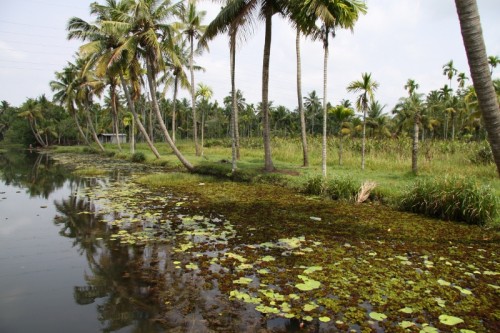
These ornaments criss-cross the entire stretch of the Malabar, from Thiruvananthapuram to Kasargod, and measure over 900 kilometres in its undulating length! It’s a blue-green labyrinth made of canals, lakes and rivers. The most picturesque of them is in the Southern part of Kerala and spreads over four districts: Ernakulam, Alappuzha, Kottayam and Kollam. It comprises five large lakes interlinked by canals, and breast-fed by 38 rivers.
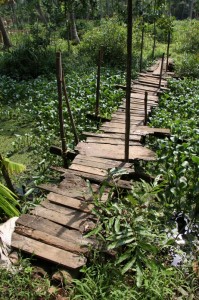
Says Manu Menon, a naturalist and wildlife photographer based in Kerala, ‘Due to the dynamic nature of these waterbodies where sea water and sweet water continuously mingle with each other, a unique eco-system is created. Here a wide spectrum of flora and fauna, of both the sea and the sweet water variety, have been living in harmony for millennia’.
Adjoining these backwaters is another habitat called Kol Wetlands that’s unique to Kerala. The major ones being in Parappur, Vembanad and Ashtamudi. Much like it happens in Kachchh in Gujarat, large swathes of land near the backwaters get completely submerged in water during the monsoon, creating innumerable islands. When the water drains off from here after the monsoon, they once again become flatlands where paddy is cultivated from October to March. As many as four species of migratory fish have been recorded in the Kol wetlands, and they have been declared as Ramsar sites for their international ecological significance.
Just as there are National Highways in the rest of India, there are National Waterways in Kerala! The longest of them is National Waterway No.3 that runs from Kollam to Kottappuram for a marathon distance of 205 kms.
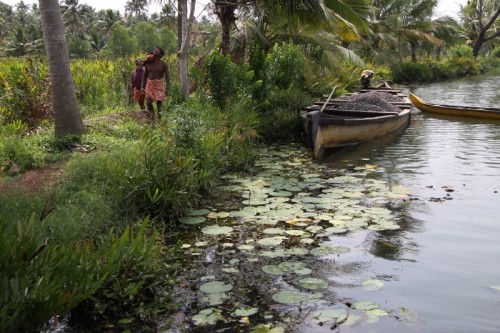
I had done the highway four years ago. We had stayed on a Kettuvallam or a Houseboat for a night and two days, at the ever-popular Kumarakom. I still remember sleeping on the deck under a canopy of twinkling stars. Much before that, I had spent a night at deep sea, near Bhayander in Mumbai. And the difference between the two nights was dramatic. Though it’s the same canopy of stars that you sleep under in the deep sea, the wobbly fishing boat makes you feel insecure, and with no land in sight anywhere you feel like a speck in the infinite universe, totally at the mercy of the elements. But in a Houseboat in the backwaters, you are the centre of the universe, safely cocooned in the orchards of swaying coconut palms.

This time, I decided to stay away from the National Waterways and take a small by-lane instead. My search for uncharted waters took me to the backwaters of Murinjapuzha, which literally means the Sliced River. A tributary of Moovattupuzha, it’s 25 kms long as the duck swims.

At the ‘tea-shaap’, as I was sipping tea and nibbling at a parippu-vada (or dal-vada for the uninitiated), the President of the local Panchayat, Selvan, said, ‘Saar, what you have done is right. It is high time tourists leave Kumarakom and Allapuzha, and explore these virgin waterways instead.’ And true to his words, in the amazing waterways of Murinjapuzha there was no traffic jam of Houseboats. The channel was being criss-crossed only by small country boats and smaller canoes.
This island is just one of the over hundred islands that dot these untested backwaters, spread over 20 sq kms. The smallest of them is just a few acres, and uninhabited; and the largest is around 3 sq kms with over 1700 houses, including churches, temples, schools and hospitals!
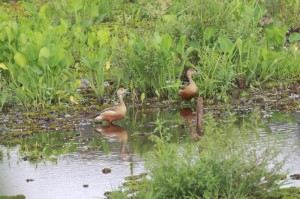
It’s a world interconnected only with waterways and a boat is the only mode of transport. So you go to school by boat, you go to work by boat, you go to the market by boat, and of course you visit your neighbours’ house by boat. So each house has a parking lot for the boats, and everyone in the house, men, women and children, are adept at rowing to their destination.
Anju Jose was the man who introduced me to this amazing waterworld. Unlike the huge, luxurious Kettuvallams or House Boats that can be moored only in deep water, and are therefore kept at a respectable distance from the shores, Anju’s boat could approach the land at will. Whenever the water became shallow, he would quietly dismantle the motor and fish out the huge bamboo pole for rowing closer to the land.
Thus we touched base at many places in the three large islands of Poothotta, Chempu and Murinjapuzha, and many more tiny ones.
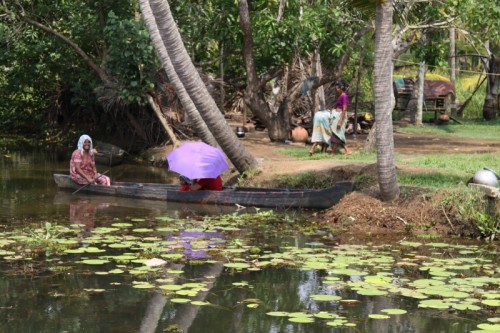
In all the smaller islands, there was a peculiar problem: ‘Water, water, everywhere; not a drop to drink!’ Because, though surrounded by an abundant quantity of brackish water, there are no sweet-water sources on these islands. So the water available on the islands is used only for bathing, washing vessels and washing clothes. And in one of these islands, I saw the paradoxical sight of water being transported on water!
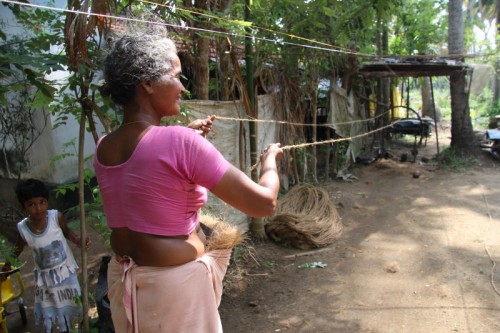
There was a whole new world out there waiting to be explored. And standing on the hull of the boat, I felt the same thrill as Ibn Batuta, the Chinese Traveller, and Marco Polo, the Legendary Explorer, both of whom had been here many centuries ago. First, there was the Magic Island, where not even the smallest canoe could approach, as the water was only one foot deep all around, for a radius of half a kilometre! So you had to wade through knee-deep water for 15 minutes to reach there. Then there was this necklace of islands each of which had chosen its occupation. So there were islands that had poultry farms, duck farms, banana plantations, prawn farms, Chinese fishing nets, toddy-tapping, sand-dredging, shell-meat collection, lime production and coir-making.
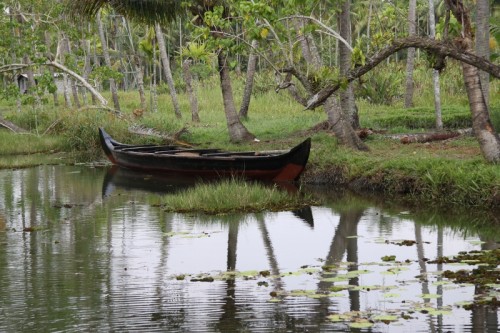
I met an old lady on Chempu Island who was weaving magic with her hands. Using a small, wooden contraption, she was getting unruly strands of coconut fibre to form a small rope, and was then getting two such small ropes to merge into one, just like two entwined serpents.
Just as our country boat took a U-turn, I looked back at the serpentine waterways that stretched as far as the eyes could see, and experienced the inexplicable joy of taking the path less traveled.
All Photos by Gangadharan Menon

Similar Story
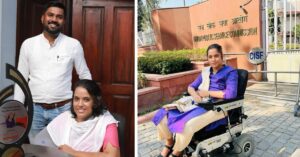
‘I Failed But Didn’t Stop’: Kerala Teacher Helps Aspirants with Disabilities Crack UPSC for Free
Once a UPSC aspirant, Kerala’s Jobin S Kottaram helps students and aspirants with motor disabilities crack the examination for free. He says his aim is to increase their representation in leadership roles.
Read more >
If you found our stories insightful, informative, or even just enjoyable, we invite you to consider making a voluntary payment to support the work we do at The Better India. Your contribution helps us continue producing quality content that educates, inspires, and drives positive change.
Choose one of the payment options below for your contribution-
By paying for the stories you value, you directly contribute to sustaining our efforts focused on making a difference in the world. Together, let's ensure that impactful stories continue to be told and shared, enriching lives and communities alike.
Thank you for your support. Here are some frequently asked questions you might find helpful to know why you are contributing?


This story made me
-
97
-
121
-
89
-
167












